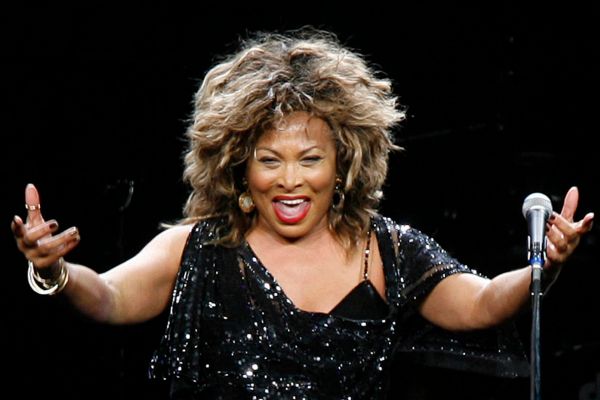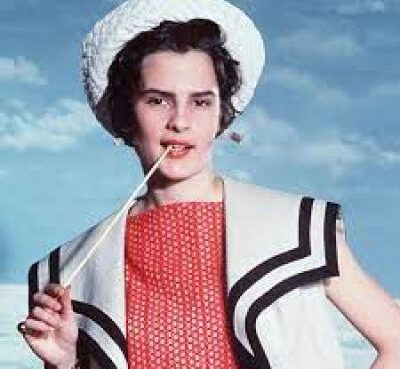Tina Turner, a soul and rock icon known for her octave-defying voice and mesmerizing stage presence, has passed away at the age of 83.
According to a statement released by her publicist, she passed away in her residence in Switzerland on Wednesday after a lengthy illness.
In her 2018 autobiography, Tina Turner: My Love Story, Turner detailed a multitude of health issues she had endured since 2013, such as a stroke, intestinal cancer, and renal failure. Erwin Bach, her second spouse, saved her life in 2017 by donating a kidney to her.
Turner achieved renown both as a solo artist and as a duo with her first husband, Ike Turner, over the course of her six-decade recording career. With the latter, she was inducted into the Rock & Roll Hall of Fame and became a fixture on the mainstream and R&B charts in the 1960s and 1970s.
Tina’s various vocal influences influenced the duo’s high-energy soul and rock. She grew up listening to country music, but she had many idols: 1950s R&B vocalists LaVern Baker and Faye Adams; gospel legend Mahalia Jackson and rock pioneer Sister Rosetta Tharpe; blues legend B.B. King; and soul legends Ray Charles and Sam Cooke.
Consequently, she possessed a malleable and adaptable voice, capable of delivering a scorching rock grumble or dipping into her lower register to perform smoky blues or velvety R&B songs.
One of Ike & Tina’s most popular compositions, “River Deep, Mountain High,” was even a Phil Spector-produced orchestral gospel triumph.
Turner added a tone of longing and desperation to The Beatles’ already-pleading “Come Together,” and she added more country flavor to The Rolling Stones’ “Honky Tonk Women.” Her signature song, a furious rendition of Creedence Clearwater Revival’s “Proud Mary,” became a showcase for her sultry soul drawl and raspy rock ‘n’ roll yell.
This composition earned Turner her first Grammy for best R&B performance by a duo or group with vocals. She would win eight Grammys in total, including best female rock vocal performance three years in succession in the 1980s.
In addition to her vocal ability, Turner possessed a commanding stage presence that was frequently described as “electrifying.”
This always seemed like an understatement: At the microphone, Turner vibrated with energy, like a kettle on the verge of boiling, and she possessed natural athleticism that translated into nimble but forceful onstage dancing. Ben Fong-Torres of Rolling Stone wrote in 1971 that Tina was once dubbed “the female Mick Jagger.”
To be more precise, Mick should be referred to as the male Tina Turner. Turner herself implied in the same Rolling Stone article that Jagger closely examined her moves during the 1969 Rolling Stones tour with Ike. Consequently, their 1985 Live Aid rendition of “State of Shock” by the Jacksons was explosive.
“I am deeply saddened by the passing of my dear friend Tina Turner,” Jagger wrote on Instagram. “She was a performer and singer of exceptional aptitude. She was awe-inspiring, friendly, amusing, and generous. I will never forget all the assistance she gave me when I was young.
Turner, who was born Anna Mae Bullock on November 26, 1939, grew up in rural Nutbush, Tennessee, but also spent time in Knoxville as a result of her parents’ employment.
Her father abandoned the family when she was 13 years old, and she had a distant relationship with both her mother and father as a child. However, she found solace in her ability to perform.
In Tina Turner: My Love Story, she describes music-filled shopping trips when she was 4 or 5 years old and was paid by salesgirls to sing radio tunes she had memorized and the thrill of directing her cousins, half-sister Evelyn, and sister Alline in make-believe stage performances.
Later, she refined her performance skills by singing at picnics with Mr. Bootsy Whitelaw, a renowned trombonist in the region.
Turner moved to St. Louis at the age of 16 to reside with Alline and her mother and began frequenting the legendary East St. Louis venue Club Manhattan, where she first witnessed Ike Turner & The Kings of Rhythm.
After her impromptu rendition of “You Know I Love You” by B.B. King impressed the bandleader in 1957, she ended up joining the group. Eventually, the group was renamed the Ike and Tina Turner Revue to emphasize Tina’s elevated status.
According to all reports, Ike was personally and professionally unduly cruel to Tina. Turner wrote in My Love Story, “In retrospect, I realize that my relationship with Ike was doomed the day he realized that I was going to be his bread and butter, his source of income.”
She then described how she was a last-minute replacement to sing on “A Fool In Love” which became the duo’s first success, reaching No. 2 on the R&B charts in 1960, and how she was so impressive that a label executive told Ike to make Tina the group’s star.
She continued,
“What was going through Ike’s mind when he heard that advice?” The trouble began when he had to find a means to safeguard his interests.
Over the years, Turner has been open about certain aspects of their time together, but she told The New York Times in 2019 that she has never revealed everything:
“I’m humiliated. I believe I’ve said enough. Ike was mentally and physically abusive, renaming Tina Turner “Tina Turner” without her permission and registering the name as a trademark without her consent.
In 1976, while the couple was on tour in Dallas, she left him virtually penniless. During a 2017 appearance on The Jonathan Ross Show, she said,
“I walked out with nothing and had to provide for my family and everyone on my own, so I just went back to work for myself.”
Turner had released two solo albums while still performing with Ike: 1974’s Tina Turns the Country On!, a stripped-down album featuring her renditions of songs by Bob Dylan, Dolly Parton, and Kris Kristofferson, and 1975’s rock-oriented Acid Queen.
Her initial forays into the entertainment industry after the breakup focused on mainstream fares, such as the game show Hollywood Squares and Cher’s variety television series, as well as cabaret-style live concerts and two albums that failed to register.
She also recorded an elegant electro-pop rendition of “Ball of Confusion” by the Temptations for the album Music Of Quality & Distinction, Volume One, which was released by Heaven 17 members Martyn Ware and Ian Craig Marsh under the name B.E.F.
1984 would prove to be a turning point for Turner. She collaborated with David Bowie on the reggae-influenced title track of his Tonight album and ultimately achieved widespread mainstream success on her own with the blockbuster Private Dancer.
As with “Ball of Confusion,” the album embraced the decade’s slicker, cutting-edge production values in fact, two tracks were co-produced by Ware while retaining Turner’s robust voice and eclectic influences.
The album’s track listing included the title track, written by Mark Knopfler, along with adaptations of songs by David Bowie (“1984”), the Beatles (“Help! “), and Ann Peebles (“I Can’t Stand the Rain”).
Private Dancer also included her only solo No. 1 single, the vulnerable and opulent “What’s Love Got to Do With It.” The single, which also won Grammy Awards for Record of the Year and best female pop vocal performance, featured a cathartic, lived-in vocal performance that heralded her sophisticated second act and cemented her reputation as a survivor, a label and aesthetic that she embraced.
As the decade progressed, Turner’s commercial resurgence persisted. She co-starred in the 1985 film Mad Max Beyond Thunderdome, which spawned the dramatic power ballad “We Don’t Need Another Hero (Thunderdome)” and the Grammy-winning “One of the Living,” as well as the Bryan Adams duet “It’s Only Love,” breezy seduction “Typical Male,” and the empowerment anthem “The Best.”
Turner became an early MTV icon due to her angular hairstyle and power miniskirts that displayed her legendary legs. She performed at the inaugural MTV Video Music Awards in 1984 and won the award for best female video the following year for “What’s Love Got to Do With It”
The 1993 biopic What’s Love Got to Do with It was largely responsible for Turner’s sustained commercial success throughout the ’90s. The film featured Laurence Fishburne as Ike and Angela Bassett as Tina. The film was based on her 1986 autobiography, I, Tina.
Both actors were nominated for Oscars, with Bassett winning the Golden Globe for best actress in a Comedy or Musical. “I Don’t Wanna Fight” became a worldwide and U.S. top 10 success, boosting Turner’s career. In 1995, she won another prestigious award by performing “GoldenEye” for the 1995 James Bond film of the same name.
Turner, who relocated to Switzerland in 1995, began reducing her burden in the late ’90s and ’00s, and ultimately retired in 2009, following a 50th-anniversary tour.
Nevertheless, she remained an active steward of her own legacy; she worked closely on the development of Tina: The Tina Turner Musical, which debuted on Broadway in the autumn of 2019.
And at the 2008 Grammy Awards, she performed a dazzling rendition of “Proud Mary” alongside Beyoncé. It is simple to see the moment as Turner passes the torch to a younger musician in retrospect. Nevertheless, the performance once again demonstrated that she was firmly in charge of her extensive musical legacy.
Also Read: M. Shadows Married His Wife After A 6th-Grade Romance




